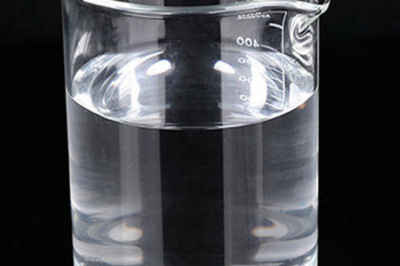views

The Male Infertility Market size was estimated at $3.18 billion in 2020, projected to grow at a CAGR of 4.8% during the forecast period 2021-2026. Male infertility is a condition that is characterized by the failure of a man's reproductive system to achieve a pregnancy after a period of 12 months or more of unprotected activity. Millions of people of reproductive age around the world are affected by infertility, which also has an impact on their families and societies. Infertility affects 48 million couples and 186 million people worldwide, according to WHO estimates. Infertility in men is most often caused by problems with sperm ejection, sperm absence or low amounts, or sperm that have abnormal morphology and movement (motility). Assisted Reproductive Technologies address a broad range of infertility therapies that provide options for males with issues like low sperm count, poor sperm content, and poor motility. Furthermore, as opposed to drugs, Assisted Reproductive Technologies to have a high success rate owing to advances in these technologies as a result the demand for male infertility is expected to expand significantly in the future. Moreover, the increasing acceptance of minimally invasive surgeries will benefit from improved healthcare policies that offer medical coverage and reimbursements to patients all over the world which is also projected to drive the market. However, the lack of trained personnel and high costs associated with treatment is predicted to pose a threat to the market's growth during the forecast period 2021-2026.
Male Infertility Market Segment Analysis- By Test Type
Based on test type the market is divided into DNA Fragmentation Technique, Oxidative Stress Analysis, Sperm Agglutination, Computer Assisted Semen Analysis, Sperm Penetration Assay, and others test types. Since diagnostic techniques can provide a reliable examination of sperm DNA integrity, DNA fragmentation accounted for the largest market share in 2020. DNA fragmentation is a relatively new technique that has quickly gained popularity and is now widely used in developing countries. Even so, owing to the high cost, the method has yet to gain acceptance in developed countries or be accepted as a normal practice.
However other test types are predicted to grow at a higher CAGR. For instance, Computer-assisted semen analysis is set to expand at a higher CAGR 0f 5.4% during the forecast period owing to technological advances. The most common test for diagnosis is sperm analysis, which can be done using microscopic inspection techniques is also expected to grow significantly.
Request for Sample Report @ https://www.industryarc.com/pdfdownload.php?id=508533
Report Price: $ 5900 (Single User License)
Male Infertility Market Segment Analysis - By Treatment
Based on treatment, the global market is segmented into assisted reproductive technology and surgery, and hormone treatment and medications. Assisted reproductive technology and surgery account for the highest market share in 2020 and is projected to grow at a CAGR of 5.7% during the forecast period 2021-2026. The dominance in this technology and procedures address a broad range of infertility therapies that provide options for males with issues like low sperm count, poor sperm content, and poor motility. Furthermore, as opposed to hormone treatment and medications, ARTs have a high success rate owing to technological advances thereby the demand for male infertility is expected to expand significantly in the future.
Male Infertility Market Segment Analysis - By Geography
Based on geography, Europe dominated the Male Infertility Market with a regional share of 31.3% in 2020 followed by North America and APAC. The rising geriatric population, diseases, and increasing acceptance of minimally invasive procedures are the major factors driving the growth in this region. Moreover, the presence of a large number of advance and well-equipped specialized fertility clinics and manufacturing companies that invest heavily in R&D is further predicted to propel the market growth in this region. However, the Asia Pacific region is predicted to see the demand maturing in Male Infertility Market owing to the growing population, increased awareness about male infertility disease, and available treatment options during the forecast period 2021-2026.
Male Infertility Market Driver
Increasing incidence of Disease
The global Male Infertility Market is being driven by an increased incidence and prevalence of male infertility diseases. Infertility affects about 8% to 12% of couples around the world. Male factor infertility accounts for about 40 percent to 50 percent in all cases. This may be due to factors including irregular morphology, low sperm concentration, and slow sperm motility, to name a few. Male infertility can also be caused by a number of other factors, including smoking, obesity, stress, and lifestyle changes. Moreover growing awareness and continuous advances in the medical device industry to treat Male Infertility are also expected to contribute to market growth during the forecast period.
Download Sample Report @ https://www.industryarc.com/pdfdownload.php?id=508533
Male Infertility Market Challenge
High Cost of the Procedure
Although Assisted Reproduction Technologies have been available for more than three decades, and more than 5 million children have been born worldwide as a result of ART interventions such as in vitro fertilization (IVF), they are still largely unavailable, inaccessible, and unaffordable in many parts of the world, particularly in low and middle-income countries which is limiting the adoption procedures. Moreover, the rising stringency in the government regulation also poses a major threat thereby, acting as a major impediment to market growth.
Male Infertility Market Landscape:
Product launches, mergers and acquisitions, joint ventures, and geographical expansions are key strategies adopted by players in the Male Infertility Market. Key companies of this market are Halotech DNA, Bayer AG, EMD Serono Inc., Endo International plc, Vitrolife, Theramex, Aytu BioScience, Sandstone Diagnostics, Inc., Cadila Healthcare Ltd., and CinnaGen Co.
Developments:
In May 2019, the National Good Laboratory Practice (GLP) Compliance Monitoring Authority (NGCMA), The government of India, awarded the GLP Certification to Cadila Pharmaceuticals for its facility in Dholka.
Key Takeaways
Geographically, The Europe region held 31.3% of the total market share in 2020 owing to the availability of well-equipped and specialized fertility clinics and increasing acceptance of expensive treatment options.
Increase in the prevalence of infertility diseases that demand assisted reproductive technology treatment and surgical procedures is the major driving force for the Male Infertility Market during the forecast period 2021-2026.
Detailed analysis on the Strength, Weaknesses, and Opportunities of the prominent players operating in the market will be provided in the Male Infertility Market.
Related Reports:
A. In Vitro Fertilization (IVF) Market
https://www.industryarc.com/Report/15071/in-vitro-fertilization-ivf-market.html
B. Artificial Insemination Market
https://www.industryarc.com/Research/Artificial-Insemination-Market-Research-508600
For more Lifesciences and Healthcare related reports, please click here
About IndustryARC: IndustryARC primarily focuses on Cutting Edge Technologies and Newer Applications market research. Our Custom Research Services are designed to provide insights on the constant flux in the global supply-demand gap of markets. Our strong team of analysts enables us to meet the client research needs at a rapid speed, with a variety of options for your business. Any other custom requirements can be discussed with our team, drop an e-mail to sales@industryarc.com to discuss more about our consulting services.












